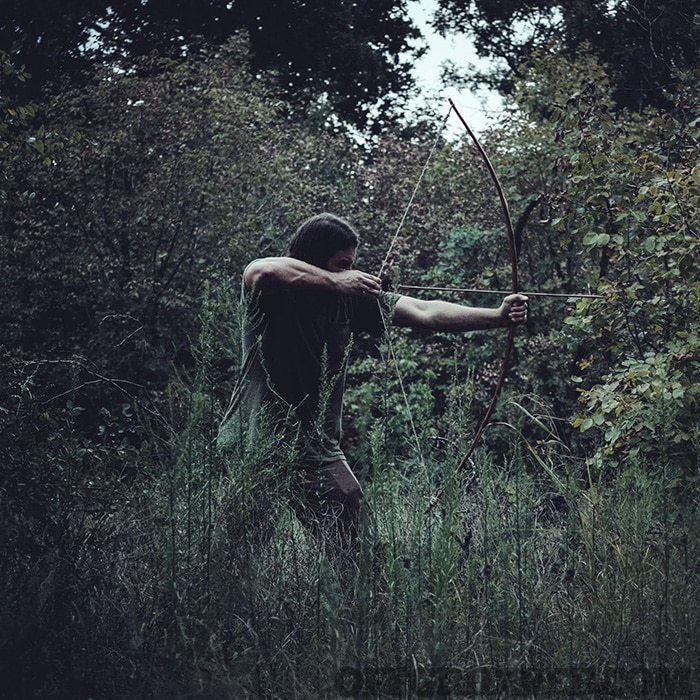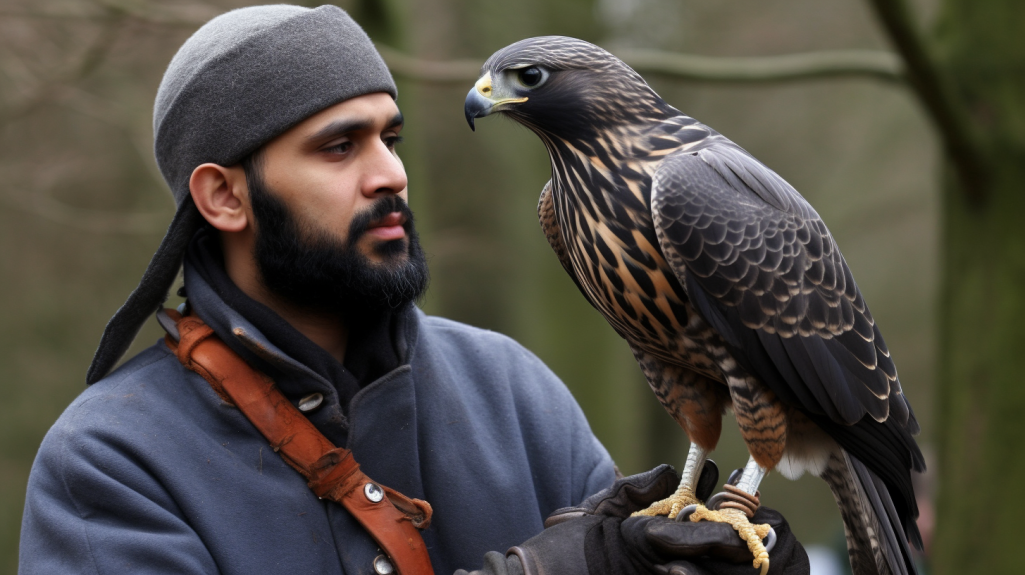
Gros Ventre Buffalo Jump Sites: Ancient Hunting Techniques on the Northern Plains
On the vast, windswept plains of what is now Montana and Wyoming, beneath an endless sky, lie silent witnesses to an ancient drama: the Gros Ventre Buffalo Jump Sites. These aren’t merely archaeological curiosities; they are monumental testaments to human ingenuity, communal cooperation, and an profound understanding of both the landscape and its most dominant inhabitant, the American bison. For thousands of years, long before the arrival of horses and firearms, the Indigenous peoples of the Northern Plains, including the Gros Ventre (A’aninin) and their ancestors, perfected a hunting technique that was as daring as it was devastatingly effective: the buffalo jump.
Imagine the scene: a thundering herd of thousands of bison, driven by a primal fear, stampeding towards a precipice. Below, a community awaits, not in ambush, but in a meticulously planned operation to harvest life-sustaining resources on an unprecedented scale. This wasn’t just a hunt; it was a seasonal ritual, a grand strategy for survival that shaped entire cultures and left an indelible mark on the landscape.
The Necessity of the Jump: Adapting to the Plains
Hunting the American bison on foot was an incredibly perilous undertaking. These massive animals, weighing up to 2,000 pounds, were fast, powerful, and notoriously dangerous when cornered. A single hunter with a spear or atlatl faced immense odds. While individual hunts certainly occurred, the need to feed large groups, especially through harsh winters, necessitated a more efficient, large-scale method. The buffalo jump was the ingenious solution, transforming the sheer power of the herd into a tool for communal sustenance.
"The buffalo jump represents the pinnacle of cooperative hunting technology on the Plains," explains Dr. Evelyn Reed, an archaeologist specializing in Northern Plains cultures. "It required an intimate knowledge of bison behavior, meticulous planning, and the coordinated effort of an entire community. It wasn’t just about killing; it was about managing a resource for long-term survival."

The Northern Plains, with its dramatic coulees, steep cliffs, and vast open spaces, provided the perfect topography for these operations. The Gros Ventre, with their deep ancestral ties to this land, understood these features implicitly, selecting specific locations where the terrain naturally funneled bison towards a fatal drop.
The Anatomy of a Buffalo Jump: A Symphony of Strategy
The execution of a buffalo jump was a complex, multi-stage operation demanding precise timing and unwavering courage. It can be broken down into several critical phases:
-
Site Selection and Preparation:
The choice of a jump site was paramount. It required a high cliff or steep drop-off, ideally with a relatively flat, open area above it where bison could be gathered and driven. Crucially, the approach to the cliff needed to be subtle, perhaps a gentle incline or a hidden ravine, so the bison wouldn’t sense the danger until it was too late. Many sites featured "drive lines"—long V-shaped alignments of stone cairns, brush, or even small earthen mounds extending for miles across the plains. These lines, sometimes hundreds or thousands of feet long, served as psychological barriers, subtly guiding the herd towards the desired trajectory. "These drive lines weren’t just fences; they were whispering walls, designed to steer the herd without alarming them prematurely," notes anthropologist Dr. Marcus Thorne. "They demonstrate an incredible understanding of animal psychology." -

The Drive:
This was the most critical and dangerous phase. A small, highly skilled group of "buffalo runners," often young, agile men, would position themselves upwind of a herd. Their task was to gently agitate a portion of the herd, slowly turning them towards the drive lines. Disguised in bison hides or mimicking the movements of wolves, they would gradually increase the pressure, nudging the animals forward. As the herd began to move, other members of the community, hidden behind the drive lines, would emerge, waving blankets, shouting, and creating a terrifying din. The goal was to initiate a full-blown stampede, building momentum as the bison surged towards what they perceived as an escape route.The runners often led the charge, risking their lives to keep the herd moving in the right direction. The air would have been thick with dust, the ground trembling under thousands of hooves, and the roar of the stampede a deafening symphony of impending doom. The bison, driven by panic and herd instinct, would follow the lead animals, unaware of the chasm awaiting them.
-
The Jump:
At the critical moment, the lead bison, unable to stop or turn due to the immense pressure from the animals behind, would plunge over the cliff edge. Thousands more would follow, an unstoppable cascade of flesh and bone. The fall itself would kill or severely injure most of the animals. This was not a random act; it was a controlled chaos, a testament to the hunters’ ability to manipulate a natural force. -
The Kill Site and Processing:
Below the cliff, at the base of the jump, was the "kill site." Here, the injured and struggling animals were quickly dispatched by hunters using spears, stone knives, and mauls. This was done swiftly and respectfully, minimizing suffering. The sheer volume of bison at a successful jump could be staggering, sometimes hundreds or even thousands of animals.Following the kill, the arduous and extensive work of processing began. This was a communal effort involving every member of the band – men, women, and children. The goal was to utilize every single part of the bison, leaving virtually no waste. Meat was butchered, hides were skinned, and bones were broken for marrow. This intensive labor might last for days or even weeks, depending on the size of the kill.
"The Gros Ventre, like other Plains peoples, understood that the buffalo was a gift, and every part held value," says Dr. Reed. "The efficiency of their processing sites is remarkable, demonstrating a deep respect for the animal and a sophisticated system for resource management."
The Abundance and Ingenuity: More Than Just Meat
The bounty from a successful buffalo jump provided far more than just fresh meat. It was the foundation of survival and culture:
- Meat: The primary product. Much of it was cut into thin strips and sun-dried or smoked to create jerky, a lightweight and highly nutritious food source that could last for months, even years.
- Pemmican: A superfood of the Plains, pemmican was made by mixing dried, pounded meat with rendered fat (tallow) and sometimes dried berries. This calorie-dense, portable food was crucial for winter survival and long journeys.
- Hides: Bison hides were incredibly versatile. They were used for tipis, clothing, robes, moccasins, shields, containers, and even boats (bull boats). Tanning was a labor-intensive process, often involving brain-tanning techniques to create soft, pliable leather.
- Bones: Bones were far from waste. They were crafted into tools like knives, scrapers, awls, needles, and points. Larger bones were often broken open to extract the rich marrow, a vital source of fat.
- Sinew: The strong tendons were dried and separated into fibers, used as thread for sewing, bowstrings, and binding material.
- Horns: Horns were shaped into cups, spoons, and other utensils.
- Hair: Bison hair was used for rope, padding, and even woven into textiles.
- Bladder and Stomach: Cleaned and dried, these became waterproof containers for food and water.
The buffalo jump, therefore, was not just a hunting method; it was a cornerstone of the Gros Ventre economy and way of life, providing the raw materials for their technology, sustenance, shelter, and cultural expression.
Archaeological Echoes: Unearthing the Past
Today, the Gros Ventre Buffalo Jump Sites are invaluable archaeological treasures. Excavations at these locations reveal layered narratives of ancient life. Beneath the earth, archaeologists find:
- Bone Beds: Thick deposits of bison bones, often thousands deep, offering insights into herd composition (age, sex ratios), health, and the sheer scale of the kills. Radiocarbon dating of these bones provides precise timelines, revealing continuous use over millennia.
- Projectile Points: Arrowheads and atlatl darts, often found embedded in bones or scattered around the kill site, show the evolution of hunting technology.
- Butchering Tools: Stone knives, scrapers, choppers, and mauls provide evidence of the processing techniques.
- Hearths: Fire pits indicate areas where meat was cooked or dried, and where people gathered.
- Stratigraphy: The layers of soil and cultural material at a jump site act like pages in a book, revealing distinct periods of use, changes in climate, and shifts in cultural practices over thousands of years.
These sites confirm that the buffalo jump was a practice spanning thousands of years, with some sites showing evidence of use dating back over 8,000 years. The Gros Ventre and their ancestors were among the many Plains peoples who mastered this intricate technique, demonstrating an unbroken lineage of adaptation and ingenuity.
The End of an Era: A Changing Landscape
The era of the buffalo jump began to wane with the introduction of new technologies and external pressures. The arrival of the horse in the 17th and 18th centuries revolutionized hunting on the Plains. While jumps continued to be used, the ability to chase and selectively hunt individual bison from horseback made the large-scale communal jump less essential for daily subsistence.
The ultimate demise of the buffalo jump, and indeed the traditional Plains way of life, came with the introduction of firearms and the relentless westward expansion of European settlers in the 19th century. The systematic slaughter of the bison herds, driven by commercial interests and government policies aimed at subjugating Indigenous peoples, decimated the very resource that made the jumps possible. By the late 1800s, the vast herds were reduced to a mere fraction of their former numbers, bringing an end to a hunting practice that had sustained generations.
A Lasting Legacy
Today, the Gros Ventre Buffalo Jump Sites stand as poignant memorials. They are not just places where animals died; they are places where cultures thrived, where communities worked in unison, and where human intelligence forged a deep, respectful, and sustainable relationship with the natural world for millennia.
They remind us of the incredible adaptability and resourcefulness of Indigenous peoples, whose ancient hunting techniques were born of necessity, honed by generations of observation, and executed with extraordinary skill. These sites are a powerful testament to the ingenuity of the Gros Ventre and their ancestors, offering invaluable insights into their way of life, their profound connection to the land, and the enduring human spirit of survival on the unforgiving Northern Plains. As we walk these ancient grounds, we are reminded that beneath our feet lies a rich tapestry of history, a story etched in stone, bone, and the silent whisper of the wind.